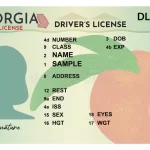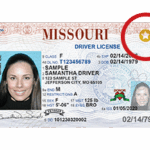Decoding the Car Title Transfer Process: A Comprehensive Guide

Buying or selling a car is a significant transaction, a milestone for many, and often a necessity in modern life. But beyond the excitement of a new vehicle or the satisfaction of a successful sale lies a critical, often overlooked process: the car title transfer. This seemingly simple piece of paper is the legal representation of ownership, and transferring it correctly is paramount to ensuring a smooth and legally sound transaction for both the buyer and the seller.
This comprehensive guide will delve deep into the car title transfer process, offering a detailed exploration of everything you need to know, from understanding the intricacies of a car title to navigating the specific requirements of your local DMV. Whether you’re a seasoned car owner or a first-time buyer, this article aims to equip you with the knowledge and confidence to navigate the title transfer process with ease and avoid potential pitfalls.
Understanding the Car Title: The Keystone of Ownership
Before diving into the transfer process, it’s crucial to understand the importance and contents of a car title. Think of the car title as the deed to your house – it legally establishes you as the owner of the vehicle. Without a valid title in your name, you technically don’t own the car, even if you possess the keys and it’s parked in your driveway.
A car title, also known as a vehicle title or certificate of title, is a legal document issued by the state’s Department of Motor Vehicles (DMV), or its equivalent that proves ownership of a vehicle. It’s a vital document that needs to be kept safe and secure, as it is essential for selling, insuring, and legally operating the vehicle.
Key Elements Found on a Car Title:
A typical car title contains the following vital information:
- Owner’s Name and Address: The legal owner of the vehicle is identified, along with their registered address. This information must match the owner’s identification.
- Vehicle Identification Number (VIN): A unique 17-character alphanumeric code that identifies the specific vehicle. This number is crucial for tracking the vehicle’s history, identifying its specifications, and preventing fraud.
- Year, Make, and Model: Details about the vehicle’s manufacturing year, manufacturer (e.g., Ford, Toyota, Honda), and specific model (e.g., Mustang, Camry, Civic).
- Odometer Reading: The mileage recorded on the odometer at the time of the title issuance. This is important for tracking the vehicle’s usage and detecting potential odometer fraud.
- Title Number: A unique identifier assigned to the specific title document. This number helps the DMV track the title’s history and prevent counterfeiting.
- Date of Issuance: The date the title was originally issued to the current owner.
- Lien Information (if applicable): If the vehicle has an outstanding loan or lien, the title will list the lienholder’s name and address. This indicates that the lender has a legal claim on the vehicle until the loan is repaid.
- Space for Transfer of Ownership: Designated sections on the title for the seller to sign and record the sale information, including the buyer’s name and address, sale date, and sale price.
- Branding: The title may contain specific branding information, such as “Salvage,” “Rebuilt,” or “Flood,” which indicates that the vehicle has sustained significant damage and has been repaired or salvaged.
Types of Car Titles:
Understanding the different types of car titles is essential for making informed decisions when buying or selling a vehicle. Here are some common types:
- Clean Title: A clean title indicates that the vehicle has not been declared a total loss by an insurance company and hasn’t sustained significant damage. This is the most desirable type of title.
- Salvage Title: A salvage title is issued when a vehicle has been declared a total loss by an insurance company due to damage from an accident, flood, or other events. These vehicles are typically considered unsafe to drive in their current condition.
- Rebuilt Title (or Reconstructed Title): A rebuilt title is issued to a vehicle that was previously designated as salvage but has been repaired and inspected to meet safety standards. While these vehicles are roadworthy, they may still have a lower value than those with a clean title.
- Flood Title: A flood title indicates that the vehicle has been submerged in water, which can cause significant damage to its electrical system, engine, and other components.
- Bonded Title: A bonded title is issued when the original title is lost or unavailable, and the applicant is required to secure a surety bond as a guarantee against potential claims against the vehicle.
- Duplicate Title: A duplicate title is issued when the original title has been lost, stolen, or damaged. It serves as a replacement for the original and carries the same legal weight.
The Car Title Transfer Process: A Step-by-Step Guide
The car title transfer process can vary slightly depending on the state and the specific circumstances of the sale, but the general steps remain consistent. Here’s a comprehensive breakdown of the process:
A. Seller’s Responsibilities:
- Locate the Title: The first and most crucial step is to locate the original car title. If you can’t find it, you’ll need to apply for a duplicate title from your local DMV before proceeding with the sale.
- Complete the Seller’s Section on the Title: Carefully fill out the seller’s section on the title, including:
- Buyer’s Name and Address: Ensure you have the correct legal name and address of the buyer.
- Sale Date: Record the accurate date of the sale.
- Sale Price: Note the agreed-upon sale price. This information is often used for tax purposes.
- Odometer Reading: Accurately record the odometer reading at the time of the sale. This is a legal requirement in most states.
- Seller’s Signature: Sign the title in the designated area. Your signature should match the name printed on the title.
- Release of Liability (if applicable): Many states require sellers to file a “Release of Liability” form with the DMV to officially notify them that they are no longer responsible for the vehicle. This form protects the seller from liability for future accidents or violations involving the vehicle. Check your state’s DMV website to determine if this form is required.
- Provide Necessary Documentation: Gather any additional documentation required by your state, such as a bill of sale, warranty information, or emissions testing results.
- Remove License Plates (if applicable): In some states, sellers are required to remove their license plates from the vehicle upon sale. Check your state’s regulations.
- Deliver the Title to the Buyer: Hand over the completed and signed title to the buyer. This is a crucial step in transferring ownership.
- Keep a Copy of the Title (Recommended): It’s always a good idea to make a photocopy of the completed title for your records. This can be helpful in case of any future disputes or discrepancies.
B. Buyer’s Responsibilities:
- Inspect the Title Carefully: Thoroughly review the title to ensure that all information is accurate and legible. Verify that the seller has completed their section correctly and that there are no alterations or erasures.
- Complete the Buyer’s Section on the Title: Fill out the buyer’s section on the title, including your name, address, and signature.
- Gather Required Documentation: Collect all necessary documentation, which may include:
- Completed Title: The title signed by both the seller and buyer.
- Application for Title and Registration: A form required by your state’s DMV.
- Proof of Identification: A valid driver’s license, state-issued ID card, or passport.
- Proof of Insurance: Insurance policy information for the vehicle.
- Bill of Sale: A document outlining the terms of the sale, including the sale price, date, and vehicle information.
- Odometer Disclosure Statement: A separate form confirming the odometer reading.
- Vehicle Inspection Report (if required): Some states require a vehicle inspection before titling and registration.
- Payment for Taxes and Fees: Be prepared to pay state sales tax, title transfer fees, and registration fees.
- Visit the DMV: Take all the required documentation and payment to your local DMV office.
- Submit the Application and Documents: Submit your application for title and registration, along with all supporting documents and payment.
- Receive the New Title and Registration: After processing your application, the DMV will issue a new title in your name and provide you with vehicle registration documents and license plates (if applicable).
Common Challenges and How to Overcome Them:
The car title transfer process can sometimes be complicated. Here are some common challenges and tips on how to overcome them:
A. Lost or Stolen Title:
- Challenge: The original title is lost, stolen, or damaged.
- Solution: Apply for a duplicate title at your local DMV. You’ll typically need to provide proof of ownership, such as a bill of sale or previous registration. There will usually be a fee associated with obtaining a duplicate title.
B. Incorrectly Filled Out Title:
- Challenge: The title contains errors, such as incorrect names, addresses, or odometer readings.
- Solution: Do not attempt to erase or alter the title. This can void the document. Instead, contact the DMV for guidance on how to correct the errors. You may need to complete an affidavit or other documentation to explain the discrepancy.
C. Lien on the Title:
- Challenge: The vehicle has an outstanding loan or lien.
- Solution: The seller must obtain a lien release from the lender. The lien release is a document confirming that the loan has been paid off and the lien has been removed. The lien release should be submitted to the DMV along with the title transfer application.
D. Out-of-State Title:
- Challenge: You’re purchasing a vehicle from someone in another state.
- Solution: You’ll need to follow the titling and registration requirements of your state. This may involve a vehicle inspection and additional documentation. Contact your local DMV for specific instructions.
E. Gifted Vehicle:
- Challenge: The vehicle is being gifted to you.
- Solution: Even if the vehicle is a gift, you’ll still need to complete the title transfer process. Some states may require a “gift affidavit” to avoid paying sales tax. Check your state’s regulations.
F. Inherited Vehicle:
- Challenge: The vehicle is being inherited after the death of the owner.
- Solution: You’ll typically need to provide a copy of the death certificate and documentation proving your legal right to inherit the vehicle, such as a will or court order. Contact the DMV for specific instructions.
G. Private Sale vs. Dealership Sale:
State-Specific Regulations: A Crucial Consideration
The car title transfer process is governed by state laws, and regulations can vary significantly from one state to another. It’s crucial to research and understand the specific requirements of your state’s DMV to ensure a smooth and compliant transfer.
A. Researching Your State’s DMV Website:
The best resource for finding information about car title transfers in your state is the official DMV website. Look for sections related to “Vehicle Titling,” “Vehicle Registration,” or “Buying/Selling a Vehicle.”
B. Key Areas to Investigate on Your State’s DMV Website:
- Required Forms: Download all necessary forms, such as the application for title and registration, the bill of sale template, and the odometer disclosure statement.
- Fees: Determine the fees for title transfer, registration, and sales tax.
- Inspection Requirements: Find out if your state requires a vehicle inspection before titling and registration.
- Emissions Testing: Check if your state requires emissions testing.
- Release of Liability: Determine if the seller is required to file a release of liability form.
- Accepted Payment Methods: Find out what forms of payment are accepted at the DMV (e.g., cash, check, credit card).
- DMV Office Locations and Hours: Locate the nearest DMV office and check its operating hours.
C. Examples of State-Specific Variations:
- Sales Tax: Sales tax rates vary significantly from state to state. Some states also offer exemptions for certain types of vehicles or buyers.
- Vehicle Inspections: Some states require comprehensive vehicle inspections, while others only require safety inspections or emissions testing.
- Bill of Sale Requirements: Some states have specific requirements for the content and format of a bill of sale.
- Odometer Disclosure Requirements: Federal law requires an odometer disclosure statement for vehicles less than 10 years old, but some states have additional requirements.
- Electronic Titling Programs: Some states are transitioning to electronic titling systems, which can streamline the transfer process.
Avoiding Common Mistakes and Pitfalls:
The car title transfer process can be fraught with potential pitfalls. Here are some common mistakes to avoid:
A. Failure to Properly Complete the Title:
- Mistake: Leaving sections blank, providing inaccurate information, or failing to sign the title.
- Consequences: The DMV may reject the title transfer application, causing delays and potentially requiring you to start the process over.
- Solution: Carefully review the title and ensure that all information is accurate and complete. Double-check the seller’s signature and odometer reading.
B. Delaying the Title Transfer:
C. Neglecting to Pay Sales Tax:
- Mistake: Failing to pay state sales tax on the purchase of the vehicle.
- Consequences: You may be subject to penalties and interest charges. The DMV may also refuse to issue a title in your name until the sales tax is paid.
- Solution: Be prepared to pay sales tax at the time of title transfer.
D. Buying a Vehicle with a Problematic Title:
- Mistake: Purchasing a vehicle with a salvage title, flood title, or other branding without fully understanding the implications.
- Consequences: You may have difficulty insuring the vehicle or reselling it in the future. The vehicle may also have underlying mechanical or structural issues.
- Solution: Carefully inspect the title before purchasing the vehicle. If the title has any branding, research the implications and have the vehicle inspected by a qualified mechanic.
E. Falling for Title Fraud:
- Mistake: Becoming a victim of title fraud, such as title washing (altering a salvage title to appear clean) or odometer fraud.
- Consequences: You could unknowingly purchase a damaged or unsafe vehicle and face legal repercussions.
- Solution: Be wary of deals that seem too good to be true. Obtain a vehicle history report from a reputable provider like Carfax or AutoCheck to check for any red flags. Have the vehicle inspected by a qualified mechanic before purchasing.
Resources and Assistance:
Navigating the car title transfer process can be challenging, but there are resources available to help:
- Your State’s DMV Website: The official DMV website is the best source of information about titling and registration requirements in your state.
- DMV Customer Service: Contact your local DMV office by phone or email for assistance with specific questions or concerns.
- Online Forums and Communities: Participate in online forums and communities dedicated to cars and vehicles. You can ask questions and get advice from other car owners.
- Legal Professionals: If you encounter complex legal issues related to the title transfer process, consult with an attorney specializing in vehicle law.
- Auto Clubs: Auto clubs like AAA often provide resources and assistance to members regarding vehicle titling and registration.
Conclusion: Mastering the Car Title Transfer Process for a Smooth Transaction
The car title transfer process is a crucial step in buying or selling a vehicle. Understanding the intricacies of car titles, following the appropriate procedures, and avoiding common pitfalls can ensure a smooth and legally sound transaction. By taking the time to research your state’s regulations, gathering the necessary documentation, and carefully completing the transfer process, you can protect your interests and enjoy the benefits of car ownership with confidence. Remember to consult your local DMV or legal resources if you have any questions or encounter any challenges along the way. With the information and guidance provided in this comprehensive guide, you’ll be well-equipped to navigate the car title transfer process with ease and peace of mind.















